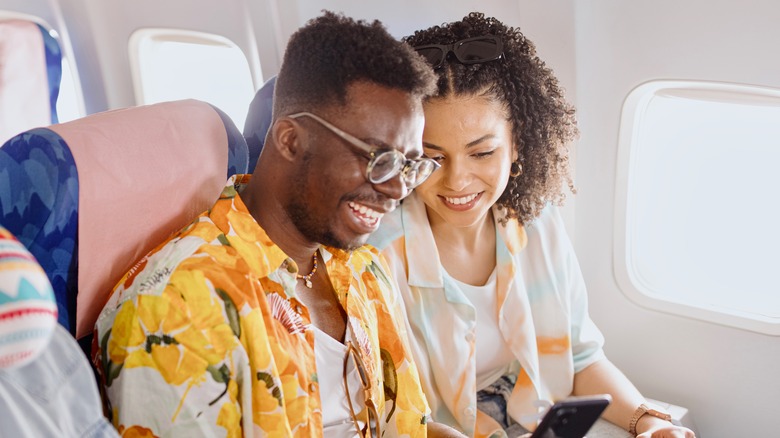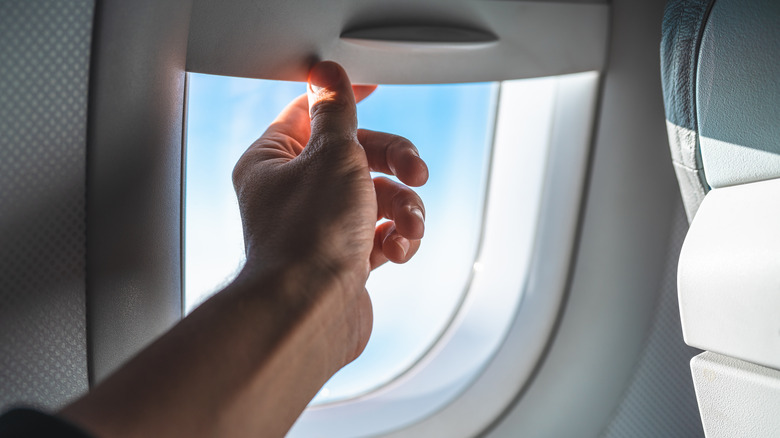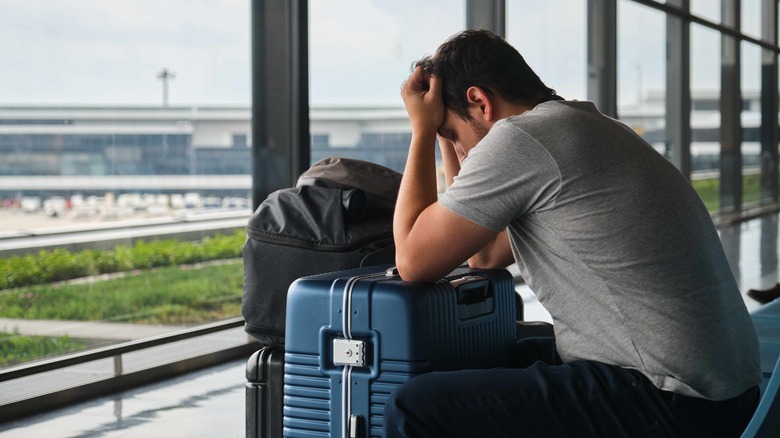Why Plane Window Shades Get Opened For Takeoff And Landing, Per A Veteran Flight Attendant
Although it's easy to forget, flying is a privilege, and only those who follow the rules are allowed on board. This can be obvious when it comes to TSA's liquid rule and other airport security regulations. But even after you've made your way to your plane seat, there are several rules and requirements you must abide by to ensure a safe and comfortable flight.
One example: adjusting window shades as instructed by your flight attendants. If you've ever sat in a window seat, you may recall being told by the cabin crew to raise your window shade during takeoff and landing. And if you assumed the attendant just wanted to get a little extra sunlight in the cabin, you guessed wrong.
Explore spoke exclusively with Barbi, a veteran flight attendant with 38 years of flying experience for a major airline, about the shades-up rule. As the expert shared, the order — like many in-flight rules — is implemented for safety, not to help passengers get their daily dose of vitamin D.
Flight attendants need to be able to see out the windows
If the sun outside your plane window is blinding yet your flight attendant instructs you to keep the shades open, know that they aren't trying to make your life harder for no reason. As Barbi explained, "Open window shades are a safety protocol that ensures visibility for both crew and passengers. In an emergency, it allows [everyone] to assess outside conditions such as fire, debris, or water, which is crucial for making evacuation decisions."
This is especially important during takeoff and landing. According to a report by Boeing, 46% of fatal accidents between 1959 and 2022 occurred during the final approach and landing phases, and 21% occurred during takeoff and the initial climb. In other words, the majority of emergencies took place at the very beginning and very end of a journey — not when the plane was cruising mid-flight. That's why you might be told to sit a certain way during takeoff and landing (including keeping your seat upright) in addition to opening your window shade.
If a flight attendant doesn't ask you to raise the shades, don't worry. Barbi told us that some airlines only require emergency exit window shades to be open during critical flight phases.
Those who don't listen can face serious consequences
Even if window shade rules vary by carrier, failing to respect them could get you in major trouble. Barbi noted that the Federal Aviation Administration (FAA) requires passengers by law to follow any directions given by cabin crew during a flight. "If a passenger refuses to comply with crew instructions, crews have the right to remove them from the flight, even if the aircraft has already left the gate and is taxiing for takeoff," the flight attendant warned. Besides being kicked off the plane, Barbi added that disorderly passengers can also be fined and, in some cases, criminally convicted.
These consequences have become even more common in the last few years, as unruly behavior on flights has skyrocketed, according to the expert. "Since then, the FAA and airlines have taken a zero-tolerance approach to disruptive passengers."
Choosing to keep your window shade down could also impede an emergency evacuation. "Every second counts during an emergency evacuation — 90 seconds, to be exact," shared Barbi. "The goal is to evacuate everyone in that time frame. This is why having the emergency exit window shades open is so important." To put it simply, your window shade — and compliance with the rules — can literally be a matter of life or death.


